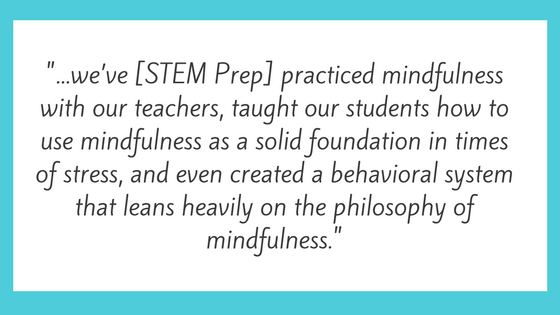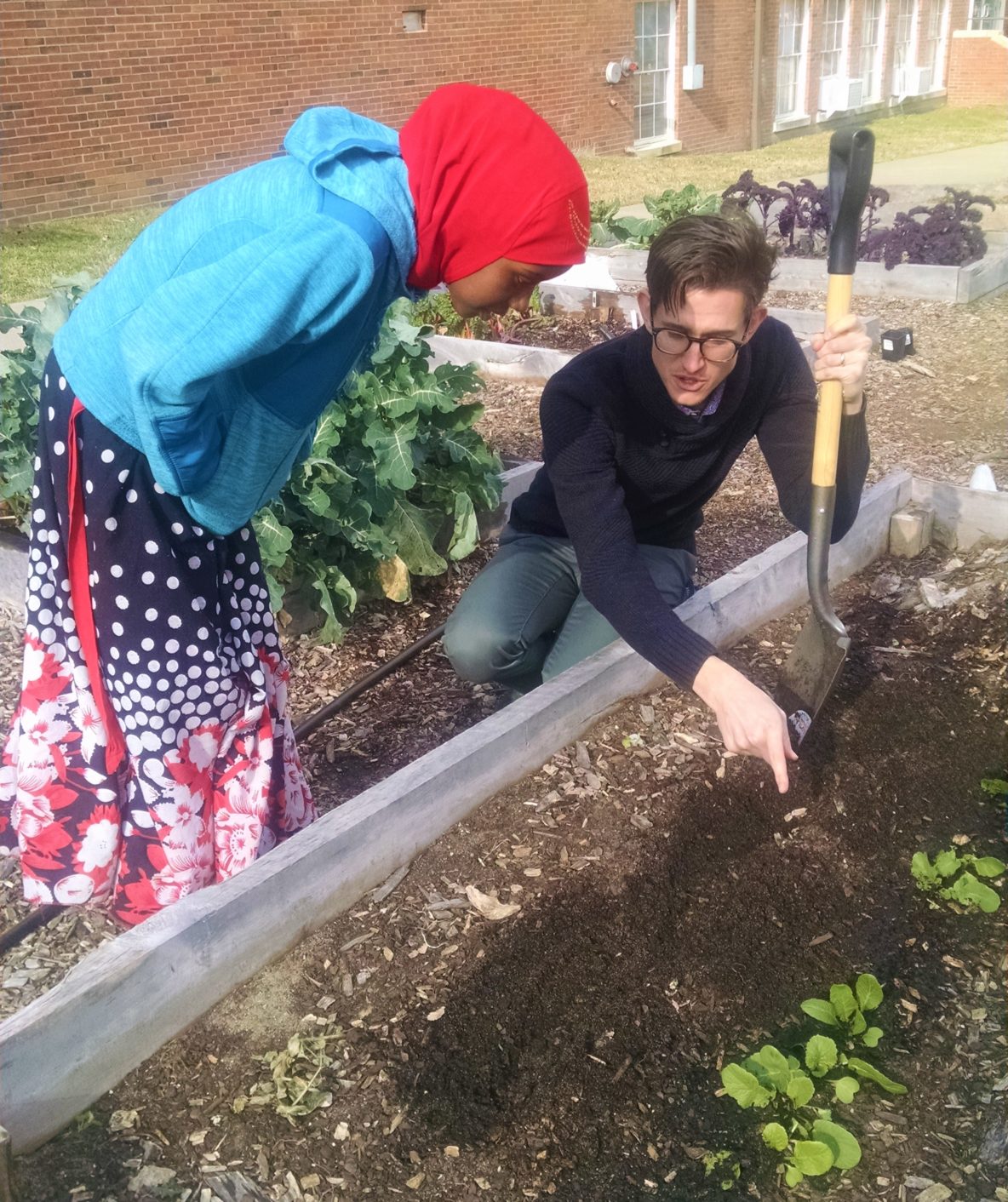A recent buzzword in educational circles is that of mindfulness. A Google search for “mindfulness in education” would confirm its recent popularity, yielding some 19 million results. Though mindfulness is a practice that dates back to the 4th century, its implementation in schools is a much more recent trend.
I stumbled upon mindfulness during the Fall of 2011, just as STEM Prep was gearing up for its second year in existence. It was my first year teaching, and thus it should be no surprise that I was simultaneously invigorated and a little unsure in my new role. As every teacher knows all-too-well, my first year was trial by fire. Even before I stepped into the classroom, as I prepped for the first day of school, I felt increasingly anxious. I worked late nights, fretted over the tiniest of details and wrung my hands over whether or not I could cut it in education. The first quarter came and went and with each passing day, I became more emotionally impulsive; quick to judge, quick to overreact, and quick to criticize myself about every shortcoming. By semester’s end, I didn’t think I could go on much longer.
Over the winter break, my brother recommended a book for me, called “Wherever You Go, There You Are.” He told me it was a book about something called ‘mindfulness’ and that by practicing certain techniques, it could alleviate stress. I was hungry for anything that might help and I figured any medicine was good medicine. I decided to read the book, if for no other reason than to figure out what the whole ‘mindfulness’ thing was all about.
In the book, Jon Kabat Zinn, author and founder of the Mindfulness Based Stress Reduction clinic at the University of Massachusetts, describes mindfulness as a ‘practical way to be in touch’ with oneself ‘through a systematic process of self-observation, self-inquiry, and mindful action.’ Put another way, mindfulness practice involves making a choice to take a break from the frenetic pace of life to check in with one’s own physical, mental, and emotional well-being. And so, six years ago, with the New Year just begun, I resolved to give mindfulness a shot.
The book stressed the importance of continuity in practice. Less important than meditating for long periods of time was committing to a few minutes each day to sit quietly, and so I did. While I would like to say that I noticed immediate progress, that I was a changed man with an even temperament, a peaceful mind, and a soul at one with the universe, I can make no such claims. For ten minutes each morning before work, I would sit quietly in my living room, following the rhythm of my breath, “in” and “out.” Inevitably, my mind would be drawn away from my attention to breathing. One thought would lead to another, worries about work, how to teach next week’s skills, how many papers still needed grading, but after some time, I would remember my intention, and I would return to my breath. In and out. In and out.
Over the course of the semester, I continued to practice in this way. Progress was slow, but steady. I began to notice that I could calm myself more easily in stressful situations, began to notice the simple rhythm of my breath in times when previously my anxiety may have taken over. When progress became noticeable, I immediately began to consider how this simple (but not ‘easy’) practice could serve other teachers. But beyond that, I wondered if the practice could also be used to help students.

In the years that followed, the benefits of my own mindfulness practice, coupled with research suggesting its practicality for all ages, all cultures, and all (non) belief systems, has led to powerful changes here at STEM Prep. In that time, we’ve practiced mindfulness with our teachers, taught our students how to use mindfulness as a solid foundation in times of stress, and even created a behavioral system that leans heavily on the philosophy of mindfulness.
Over the next few months, I will be writing a three-part series on mindfulness practices. I’ll focus first on how to establish a personal practice and then how to implement mindfulness with teachers in group settings. I’ll finish the series by providing information on the benefits of mindfulness for students and how to introduce these techniques to them in a way that is functional and useful for their busy lives.
Zephaniah grew up in the Bluegrass, the second youngest in a family of 9. Growing up, he informally studied music and writing. Upon graduation from High School, he formally pursued degrees in Vocal Music and Creative Writing. After earning his degree, Zephaniah moved to Tennessee and joined the Nashville Teaching Fellows. At the end of summer training in 2012, he was hired at STEM as the Founding 6th Grade Reading Teacher. In the years that followed, Zephaniah taught Creative Writing and Music; he worked as a part-time Behavior Specialist before moving into the Dean of Culture position in 2016-17 year. Currently, Zephaniah focuses his efforts on student behavior with a special emphasis on mindfulness and restorative justice practices.

